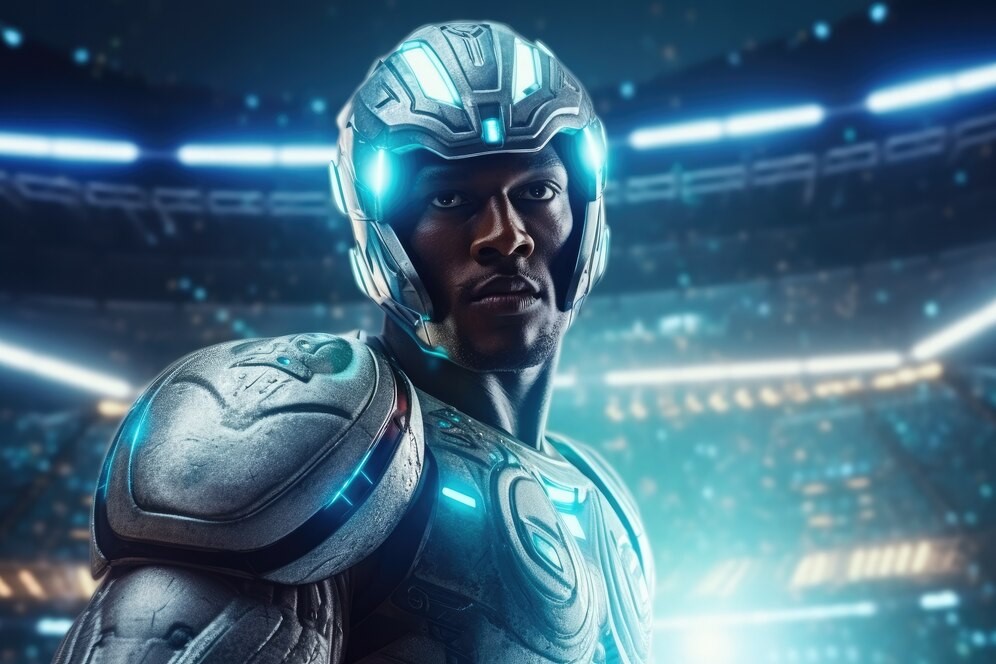Artificial intelligence has affected various facets of the sports industry, and its impact on training is astonishing. AI opponents are altering the way athletes train for competition by offering opponents that suit their skill level and strategies. This goes far beyond video games. Elite professional athletes from football, basketball, boxing, and even motorsport professionals are using AI-powered simulations as a way to enhance their reflexes and multitasking skills and make split-second decisions to become better than their human adversaries. In this article, we will see how the world of athletics is embracing AI technology in their training.
What Are AI Opponents in Sports Training?
AI virtual opponents are systems that are self-governing and designed to imitate real competitors in a bid to provide athletes with a unique training experience. These systems monitor a player’s movements, learn from interception matches, and adapt themselves to offer novel challenges. Unlike primitive training practices, AI simulations substitute the chances of human sparring partners with AI while still presenting reasonable competitive friction.
And they use this technology in a variety of sports. In the end, AI is useful even in cricket betting, but there its purpose is more in data analysis, with a lot of data! As for AI opponents, it will be better to explain it using specific sports. For example, Formula 1 drivers like Lewis Hamilton sharpen their strategies prior to a race with the help of AI that emulates track conditions and other drivers, providing virtual assistance on and off the field. Similarly, teams like Manchester City have used AI-emulated match simulations to condition changes before high-stakes matches.
How AI Simulations Help Athletes Improve
The perks of AI training go beyond just default work; these systems provide thorough performance insights. Here’s a closer look at some of the major benefits:
- Increased Reaction Accuracy: The AI adversaries over-expose athletes to numerous stimuli and disturb their concentration, which eventually sharpens their reflexes.
- Tactical Flexibility: Athletes can practice a new tactic by observing different styles of play without having to engage a live opponent.
- Psychological Preparation: Dealing with AI-induced pressure situations assists in preparing athletes for mental breakdowns in real competition.
- Intelligent Feedback: Trainers can evaluate an athlete’s performance in real-time, as AI quantifies a player’s performance in numerous ways and prepares a strategy to improve the athlete.
All these make AI an indispensable training companion, enhancing every physical and mental component of an athlete’s game. And by subscribing to MelBet, you can learn even more interesting facts from the world of sports; perhaps today you will learn something new and amazing! Subscribe and always be aware of all sports events and watch funny memes at any time of the day on your smartphone in a convenient Facebook format.
Real-Time Adaptation: AI That Learns from Players
In contrast to conventional practice techniques, AI rivals adjust themselves dynamically based on the skill level of the athlete. This means that the difficulty is always modified in order to stretch the boundaries of the athlete’s capabilities. When talking about professional boxing, AI sparring partners such as “STRIKE AI” observe an athlete’s punches and defensive actions, making modifications as they train in order to make the training more effective. Likewise, in basketball, designers created AI systems that copy certain defenders who challenge the players to improve their offensive gameplay against virtual replicas of real NBA defenders for the participating athletes.
How AI Opponents Are Used in Esports and Physical Sports
AI isn’t just used in regular sports; even competitive gamers use AI for their training simulations. Athletes playing League of Legends and Dota 2 train with AI bots that mimic the gameplay of high-ranking players. At the same time, soccer teams like FC Barcelona have developed AI technologies that help in the process of strategic planning by modeling various outcomes of critical matches prior to them. Even Olympians like fencers and tennis players have started applying AI technologies to assess their movement and stroke precision.
AI vs. Human Training Partners: Key Differences
AI training partners have started a lot of debate on whether they can take the place of human sparring partners. Here is a contrast:
- Consistency: AI opponents never get tired, which makes them great for extensive practice.
- Precision: AI-controlled opponents, unlike human counterparts, perfect their techniques every time, allowing extremely accurate training.
- Adaptability: AI can replicate a spectrum of play styles, whereas many human partners are restricted to a few.
- Physical Existence Element: While AI training is truly great in preparing the mind, it is said to lack even the slightest unpredictability and physicality of real opponents.
These contrasts demonstrate why AI is a great complement to human competition rather than a full substitute.
Can AI-Simulated Opponents Replace Human Sparring?
Even though AI has clear pros in training specific tasks, it is clear that many athletes still like the feel of training with people to capture the full aspect of competition. Quite a few contact sports, such as MMA and judo, are heavily dependent on grappling, something that AI has yet to achieve a high enough level of realism in. However, AI has already demonstrated superiority as a training aide in certain aspects of tennis and motorsport. As technology continues to advance, it wouldn’t be shocking to see AI take an even bigger role in aiding the athlete’s preparation and lessening the reliance on training bouts for some disciplines.
The Future of AI-Driven Sports Training
As AI technology improves over time, its application in the realm of sports training will also become more advanced. Athletes of the future might train against holographic sparring partners powered by AI or VR simulations of historical athletes training during their prime. From Ronaldo’s AI-assisted free kick analysis to an aspiring boxer perfecting their counterpunch on an AI doll, it is indisputable that AI is now integrated into training, not in the future. The more AI improves, the less distinguishable authentic competition is compared with simulated competition.

